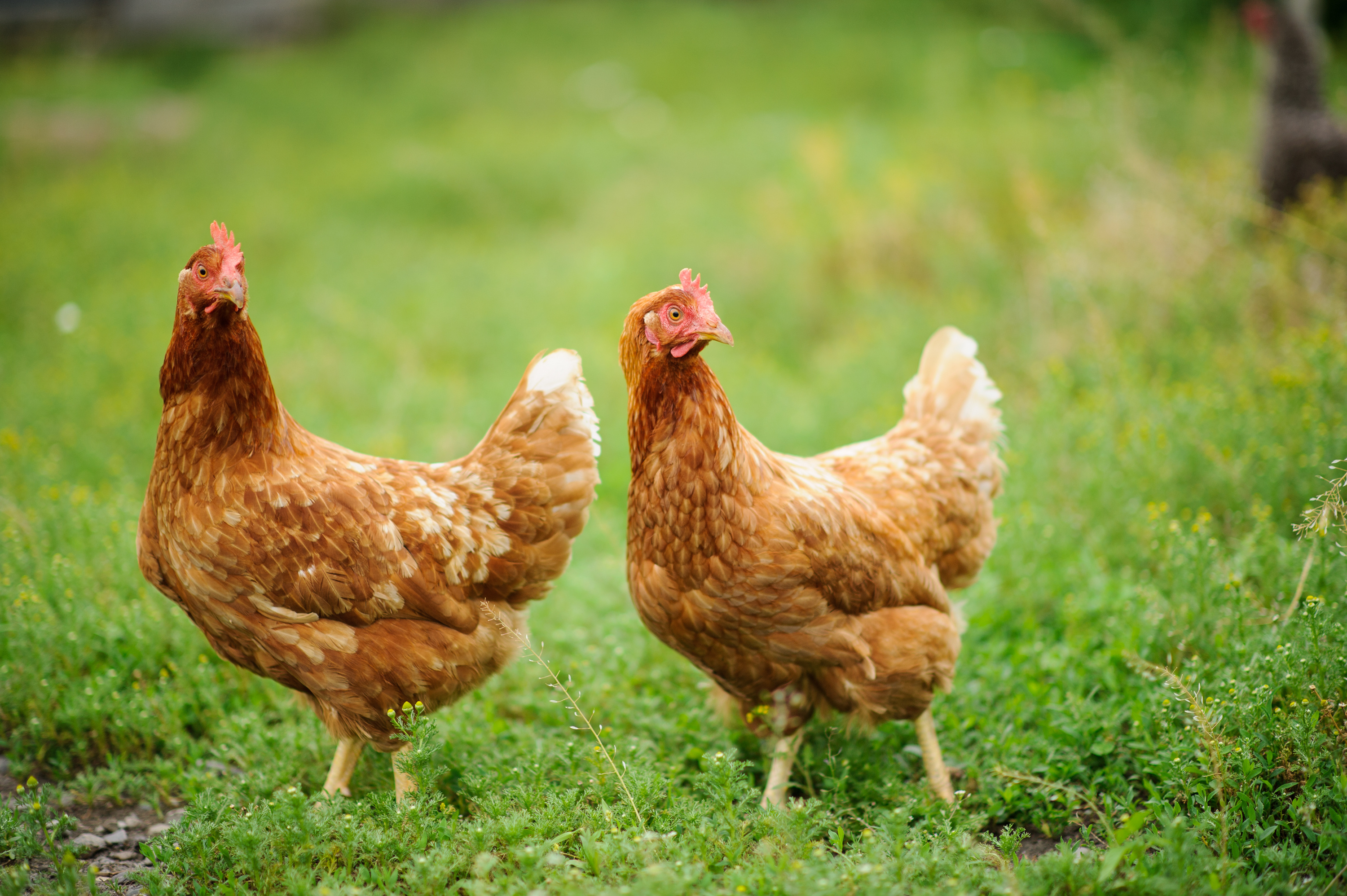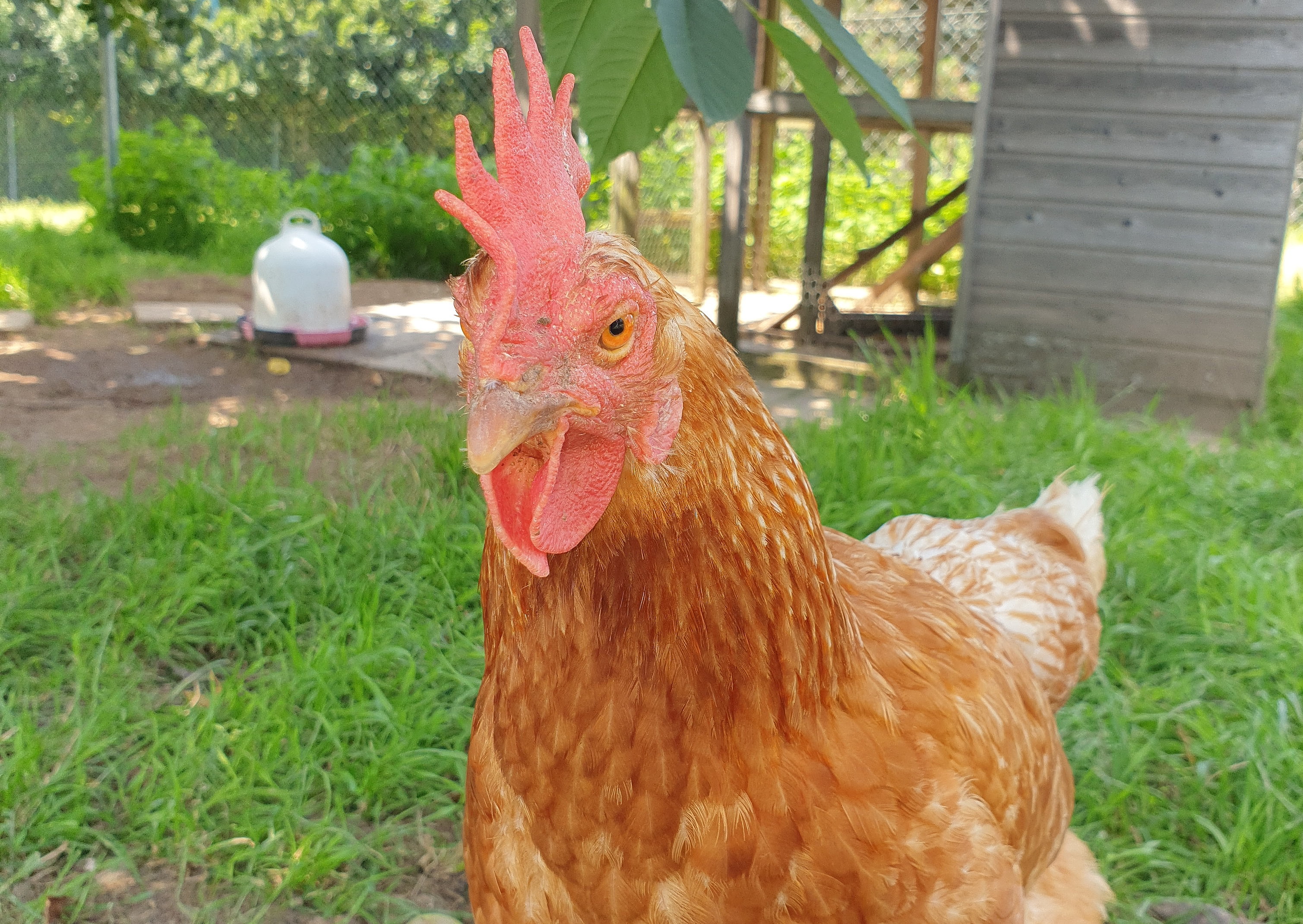Brown chicken = brown eggs?
Our domestic chicken is originally descended from the bankiva chicken from the rainforests of South-East Asia.
When a hen is in a breeding mood, she sheds her belly feathers in order to better perceive the temperature of her eggs. During this time, she lays eggs for several days until she has enough eggs for a brood. The hen incubates her clutch for 21 days and defends it vehemently against potential enemies.
The fact that the chicks hatch at almost the same time is no coincidence, as the chicks communicate with each other while still in the egg shortly before hatching. But not only the chicks communicate, the hen also communicates with her chicks while they are still in the egg. Even when the chicks have hatched, the hen lures her chicks to water and food sources with the help of various sounds.
Adult chickens are also very social with each other, developing close friendships and picking dirt particles out of each other's feathers.
As omnivores, chickens have a very varied diet, eating seeds, grasses and fruit as well as insects, worms and, rarely, even small mice. To compensate for the lack of teeth, chickens have a so-called gizzard. This contracts at regular intervals and grinds the food with the help of ingested stones.
Chickens warn each other of danger with sounds, using different sounds for different enemies.


